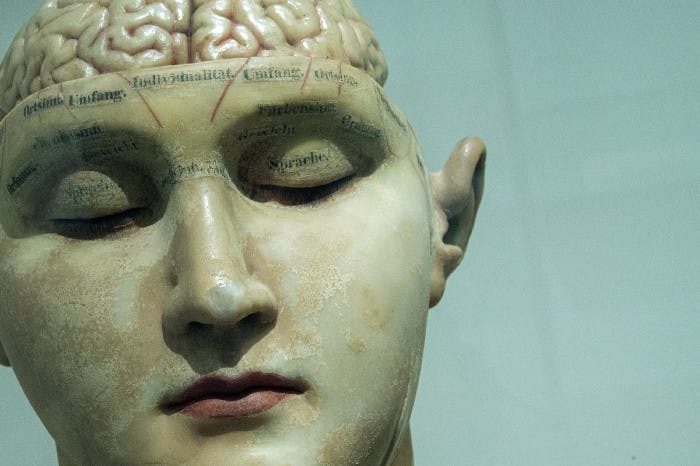Skip to content
More
Share
Explore

#7 —The Curated Mind Framework
Significant Insight
On April 14, 2022, I sent a long email about the Curated Mind framework to a friend of mine.
The “Curated Mind” framework is a significant insight in the past three months.
A significant insight could connect the past of your life and the future of your life. If we use “Thematic Space” to understand the connection between the notion of “Curated Mind”, then we can see the following two “Thematic Space”:
I have been working in the curation field for over ten years. I was the Chief Information Architect of BagTheWeb which was an early tool for content curation (We launched the site in 2010). This experience inspired me to make a long-term commitment to the Curation theme. After having 10 years of various curation-related practical work experience and theory learning, I coined a term called Curativity and developed Curativity Theory which became a book.
I wrote the book Curativity in 2019 and started applying it to the Knowledge Curation project. You can find more details in and .
.


Mr. Seldon is an ambitious serial entrepreneur with a unique educational background in psychological science. In 2015, Mr. Seldon moved to the educational field and started his third business: Andmind Group. Mr. Seldon didn’t use “Andmind Group” as a name for his business. I just use this term to refer to various activities of his enterprise.
In 2014, Andmind Group started as a social media group with about 250 members who are PhDs in psychological science or professional workers. Some members are students of leading academic researchers such as the founders of SDT(Self-determination theory).
This private group is a wonderful learning environment for me. For about two years, I learned various approaches to psychological science and cognitive sciences from the continuous conversation within the group. Finally, I found my favorite is ecological psychology.
Moreover, I didn’t want to become a researcher in psychological sciences. I wanted to expand the ecological approach to social practice studies such as knowledge curation, digital design, platform development, etc.
Then, I worked on my theoretical approach: the Ecological Practice approach. One year ago, I review the three versions of the approach and its historical development. You can find details
.In the past several months, I slowly returned to the topic of Mind. On April 14, 2022, I realized that there are three triggers for this transformation.
1) The D as Diagramming Project
In order to summarize the insights from the D as Diagramming project, I returned to a framework I developed in 2017 and used it to frame the D as Diagramming project.
2) The Life Discovery Project
In order to conduct the Life Discovery Project, I returned to the “life transition” theme and the “career development” theme.
3) The Change of “Self — Other” Relevance
In a Linkedin post, I mentioned the insights of “Collective Network of Enterprise” and “Project Network” which are driven by the change of my “Self — Other” relevance. In the past three months, many friends gave me wonderful feedback which guided the direction of my creative work.


Eventually, I started detaching from Ecological Psychology and attaching my mind to a more broad space: the whole landscape of psychological science and cognitive science.
In other words, I returned to 2015 with the perspective of Curativity Theory.
Method


The above model is called the Relevance of Zone which considers Other as an important social context for the long-term development of thoughts. You can find more details
.Based on the model, we can generate the following questions:
The following section will use these questions to guide our reflection.
Analysis
Other: Who is the Significant Other for this insight?
In a Linkedin post, I mentioned the insights of “Collective Network of Enterprise” and “Project Network” which are driven by the change of my “Self — Other” relevance. In the past three months, many friends gave me wonderful feedback which guided the direction of my creative work.
For the development of the model of Curated Mind, I’d like to mention who is the Co-founder presso Italian Institute for the Future — Speculative Design Hub.
On March 15, 2022, I shared the basic model “”. On March 21, 2022, I . From March 15 to March 21, I discussed the notion of Curated Mind with several friends.
Maurizio Goetz encouraged me to explore Future Studies, Imagination Design, and Anticipative Communication /Storytelling. Our discussion inspired me to expand the level of Pervasive Mind from the original two practical perspectives to four perspectives:
Thing: What’s the insight about? Why do I pay attention to it?
The purpose behind the Curated Mind framework is to develop a framework for discussing the mind and developing tacit knowledge from the perspective of Curativity Theory.
The Curated Mind Framework is defined with the following theoretical concepts:
I also adopted the perspective of Attachance to understand the “Proximal Mind — Pervasive Mind” relationship. We can detach from Proximal Mind and attach to Pervasive Mind, and vice-versa.


We also can pay attention to the following three types of Curativity:
You can find more details about the above theoretical concepts from a previous article: .
Think: How did I get this insight? Is there a technique behind the process?
The insight is about developing a new framework. I used the following techniques to archive this goal.
The Curated Mind Framework adopts the following three theoretical approaches as foundations:
After defining the basic model: Proximal Mind (Pervasive Mind), I expanded it with eight operational concepts:
The loop of Proximal Mind is represented with the following four operational concepts:
I also use the following four operational concepts for the loop of Pervasive Mind:
These eight operational concepts are placed on a meta-diagram called the NEST Way. See the diagram below.


I have used the NEST Way to develop the Lifesystem framework, you can find more details
. I also discussed the details of the NEST Way
.Self: Where did I capture this insight?
I captured this insight in my house.
Self: When did I capture this insight?
On March 15, 2022, I published an article titled Slow Cognition: The Curated Mind and I mentioned this post:
One week ago, I wrote a short note about 'the Curated Mind' on Linkedin.
Also, the Linkedin post mentioned that "Last week, I realized that I should call it the Curated Mind." So, this insight was captured between Feb 28 to March 6.
What's the trigger of the insight? I think it's the "Optimal Context Canvas" because I use "Proximal Contexts" and "Pervasive Contexts" for the canvas.


On March 5, 2022, I published an article about the . See the above screenshot.
This led to the structure of the Curated Mind model: "Proximal Mind" and "Pervasive Mind".
Activity: Is this insight part of an activity? What’s the activity?
As mentioned above, the Curated Mind Framework adopts the following three theoretical approaches as foundations:
These approaches are my primary theoretical development activities. The Curated Mind Framework can be considered as a new project.
Activity: Has this insight led to a new action or a new activity?
Now we have a conceptual model and a practical framework, what’s next? I think we can start from the following two things:
- Knowledge Curation
- Empirical Research
If you have more ideas, please lease your suggestions as comments.
The Knowledge Curation Direction
The above practical framework offers eight operational concepts that refer to eight practical perspectives. This is a wonderful framework for knowledge curation.
We can collect more knowledge resources around each practice perspective and build dialogues between these perspectives and resources.
The Empirical Research Direction
It’s so hard to design empirical research projects about the mind. A strategic way is developing several indirect projects such as Developing Tacit Knowledge.
We can also adapt the notion of the Curated Mind as a theoretical perspective for Life Curation, Life Discovery Activity, the Slow Cognition project, etc.
For example, I had a chat with a friend this morning and I used the three types of Curativity of Mind to discuss her career experiences.
It also encouraged me to build a new knowledge center called Curativity Center.


Want to print your doc?
This is not the way.
This is not the way.

Try clicking the ⋯ next to your doc name or using a keyboard shortcut (
CtrlP
) instead.